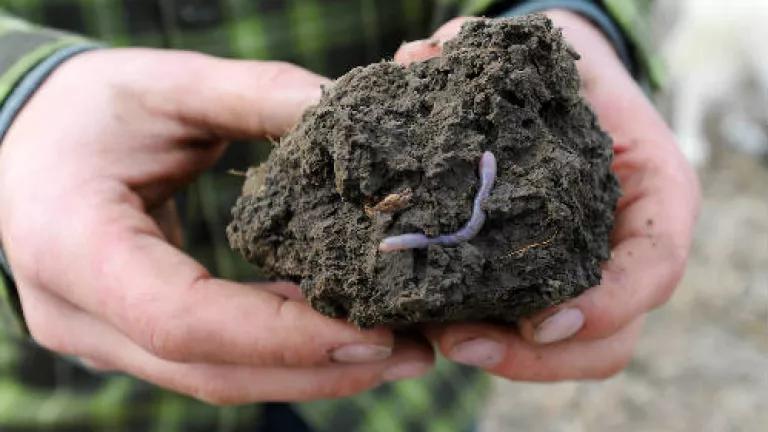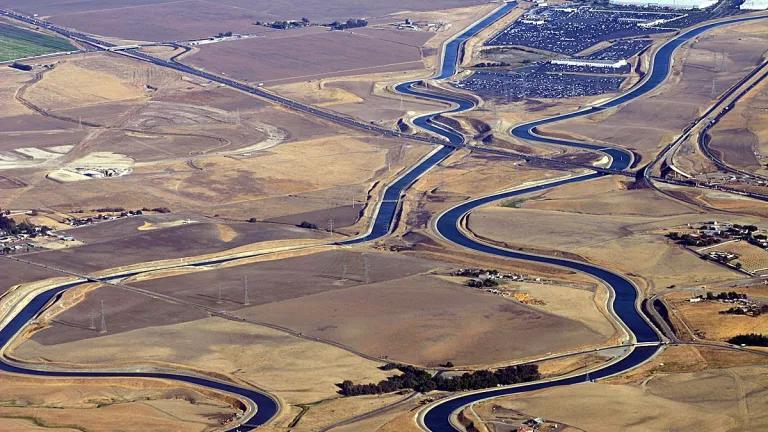Saving the Planet Starts With Our Plates
The New York Times yesterday highlighted the link between our diets and climate change and how all Americans can help fight global warming with their forks. The article offers readers clear, informative and helpful advice on how to lower the climate pollution associated with our diets. Recommendations range from reducing consumption of animal products like beef and dairy—which tend to be much more climate-intensive than plants—to reducing food waste.
NRDC’s own research also underscores the impact that changing the food we buy can make. We know that even small changes by individuals to change our diets, as well as to keep good food from going to waste, add up to a big impact in our battle to fight global warming.
Fortunately, Americans have actually made a lot of progress in reducing the climate footprint of our diet. Changes in Americans’ diets from 2005 to 2014—particularly a 19 percent drop in beef consumption—resulted in a reduction in climate pollution equivalent to the tailpipe emissions created by 57 million cars in one year.
But despite this significant reduction in beef consumption, the United States still consumes more beef and veal than most of the world. And in 2014, beef remained responsible for 34 percent of the average American’s diet-related greenhouse gas emissions. By eating more fruits and vegetables—and making even modest reductions in the amount of meat and dairy we consume—we can take an even bigger bite out of climate pollution moving forward. In fact, if every American cut just one hamburger a week (which averages about a quarter pound of beef) from their diet, we could cut emissions as much as taking about 10 million cars off the road each year.
What’s more, it’s not just the type of food we’re eating that has an impact—it’s also the amount of it that we waste. Up to forty percent of food in the U.S. is never eaten—and when good food goes to waste, so does the water, pesticides, fertilizers, energy, packaging and labor it takes to get to our plates. Not only is that expensive (it costs the average family of four $1,500/year), it has enormous environmental impacts. In fact, if the food wasted around the globe were a country, it would have the 3rd highest climate footprint on the planet behind only China and the U.S..
Since consumers are the largest single source of wasted food in the U.S., our actions in our kitchens and in the grocery aisle can have a big impact. By taking small steps—such as buying only what we actually need, storing food to maximize its shelf life, and eating leftovers—we can be a big part of solution. NRDC’s Save The Food campaign with the Ad Council has a host of easy ideas for consumers at SaveTheFood.com.
While consumers have enormous potential to fight climate change with their forks, we also need action from our lawmakers and food businesses to make the climate-friendly choice the easy choice.
We need large food service companies like Compass, Sodexo and Aramark to make their menus more climate friendly. These companies are the number two, three and four largest sellers of meals in the nation. They feed millions of people daily at large facilities like stadiums, universities and hospitals around the country. Cutting their purchases of red meat by just 30 percent would be the equivalent of taking a million cars off the roads over 10 years.
These companies don’t need to sacrifice the appeal of their food in order to cut the carbon footprint of their meals. In fact, this is increasingly what modern consumers are craving and demanding. It can mean adding new and delicious options to their menus through less meat-intensive ethnic cuisines and more plant-based foods. It can also mean blending meat with mushrooms and other plants—an approach that has proven tremendously popular with consumers because of its taste and improved climate footprint.
At its recent annual shareholder meeting, Aramark CEO Eric Foss himself recognized this potential when he said his company is “developing a holistic strategy spanning all our businesses to address climate change—from the foods we serve to the vehicles we drive. We will be setting specific goals with measurable [Key Performance Indicators] and reporting our progress publicly.” These are encouraging words. Other large food companies should follow suit by establishing comprehensive global warming emissions reduction commitments that include reducing purchases of climate-intensive foods and slashing food waste. Restaurants and fast food chains can also incorporate these approaches into their menus and have an enormous impact.
Our lawmakers at the local, state and federal levels should also play their part by making sure public policy and incentives reflect the new climate reality and favor food purchasing that is less-climate intensive. New York City recently took a big step when it set a goal of cutting beef purchases by half by 2040. And a bill currently before the California legislature (AB 479) would provide schools with additional funding to provide climate friendly, plant-based lunch entrees and beverages. Cities and states across the country should embrace impactful measures like these. And at the federal level, the USDA’s Dietary Guidelines should reflect the scientific consensus that a diet with less meat and more plant-based foods will make both people and the planet more healthy.
In parallel, policy-makers and corporations must tackle food waste. Aramark, for instance, has established a goal to cut their food waste by 50% by 2030 as have companies ranging from Campbell’s, to Kellogg’s and Hilton Hotels. Other companies should adopt similarly aggressive targets and strong implementation plans to reach them. Federal lawmakers can also help reduce confusion around date labels on food (such as “Sell By” and “Use By”). Federal legislation supported by NRDC would standardize these date labels and educate consumers on ways to enjoy their food rather than tossing it prematurely. Cities like Denver and Nashville are also taking leadership to set food waste reduction targets and boost donation of surplus food by grocery stores and other companies to those in need.
What we eat plays a big role in the fight against climate change. Eating more plants and wasting less good food are vital places to start. Resources like those from The New York Times and Save The Food provide consumers with a roadmap for action. And advocates at NRDC are working at the same time to provide CEOs and policy-makers with strategies to amplify those efforts at a national level. With strong action in homes, corporate board rooms and legislatures around the country, together we can help Americans realize the climate-fighting potential on their plates.




